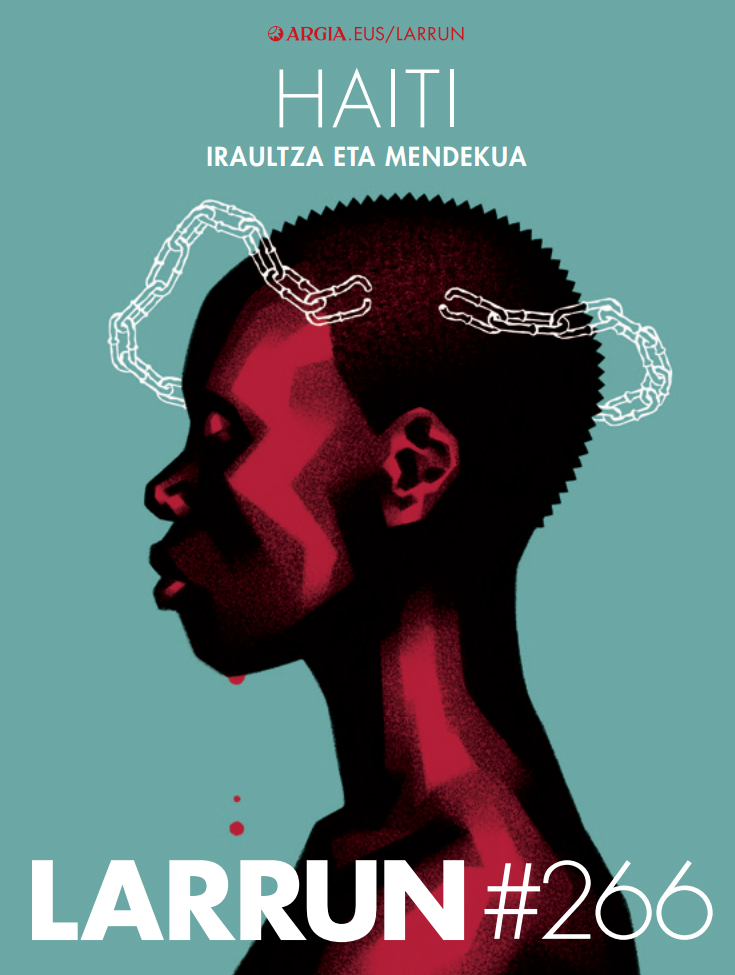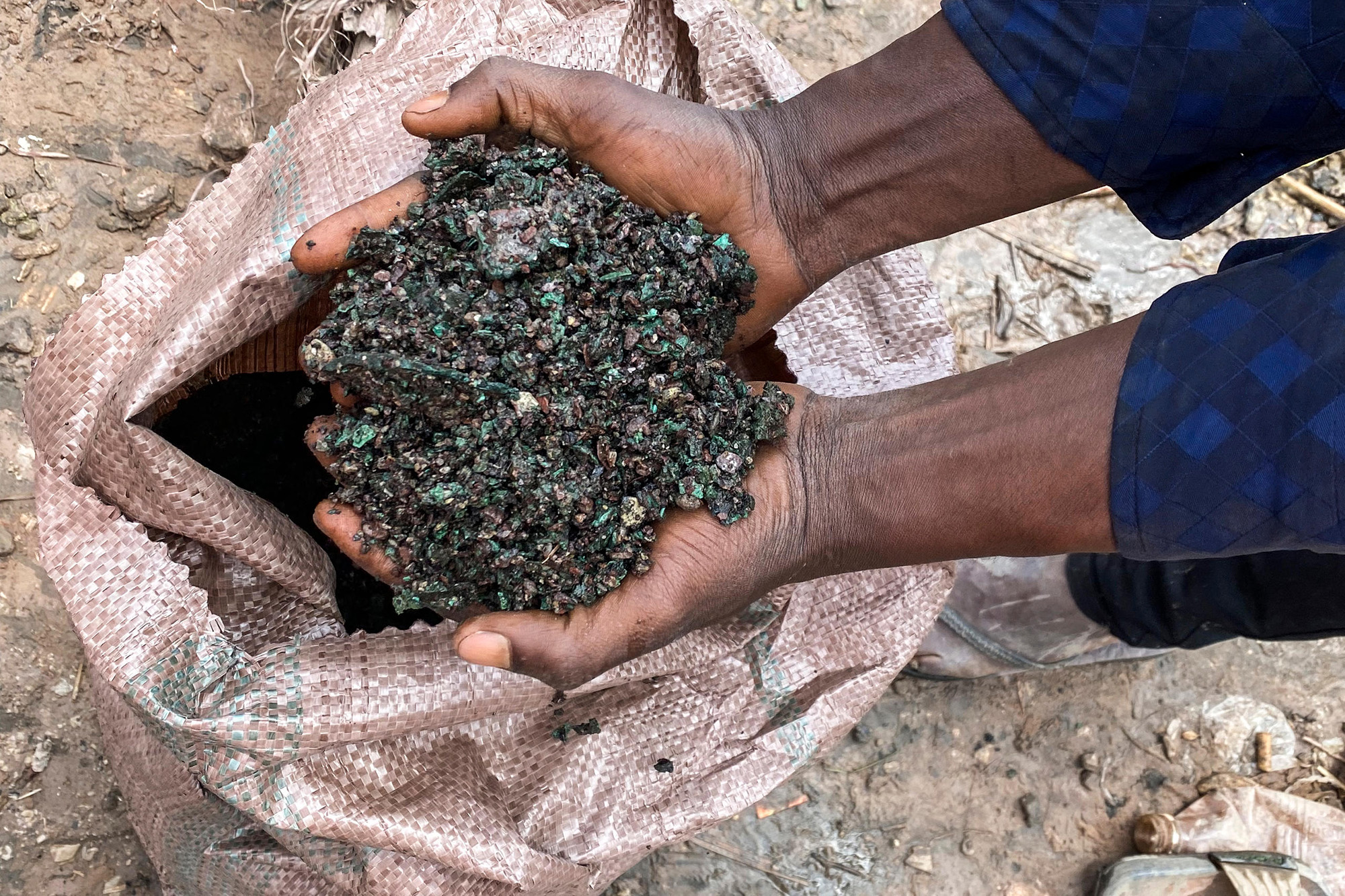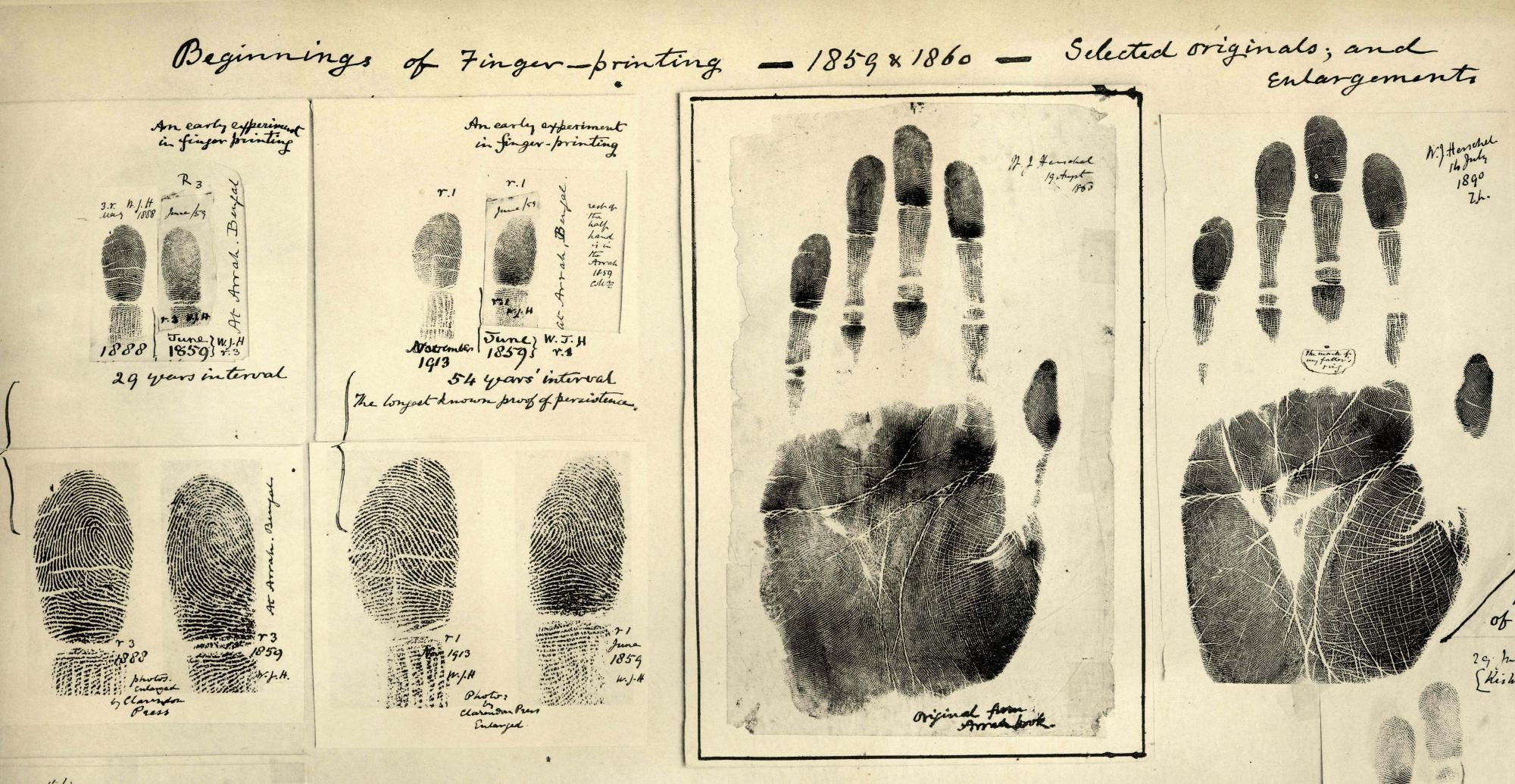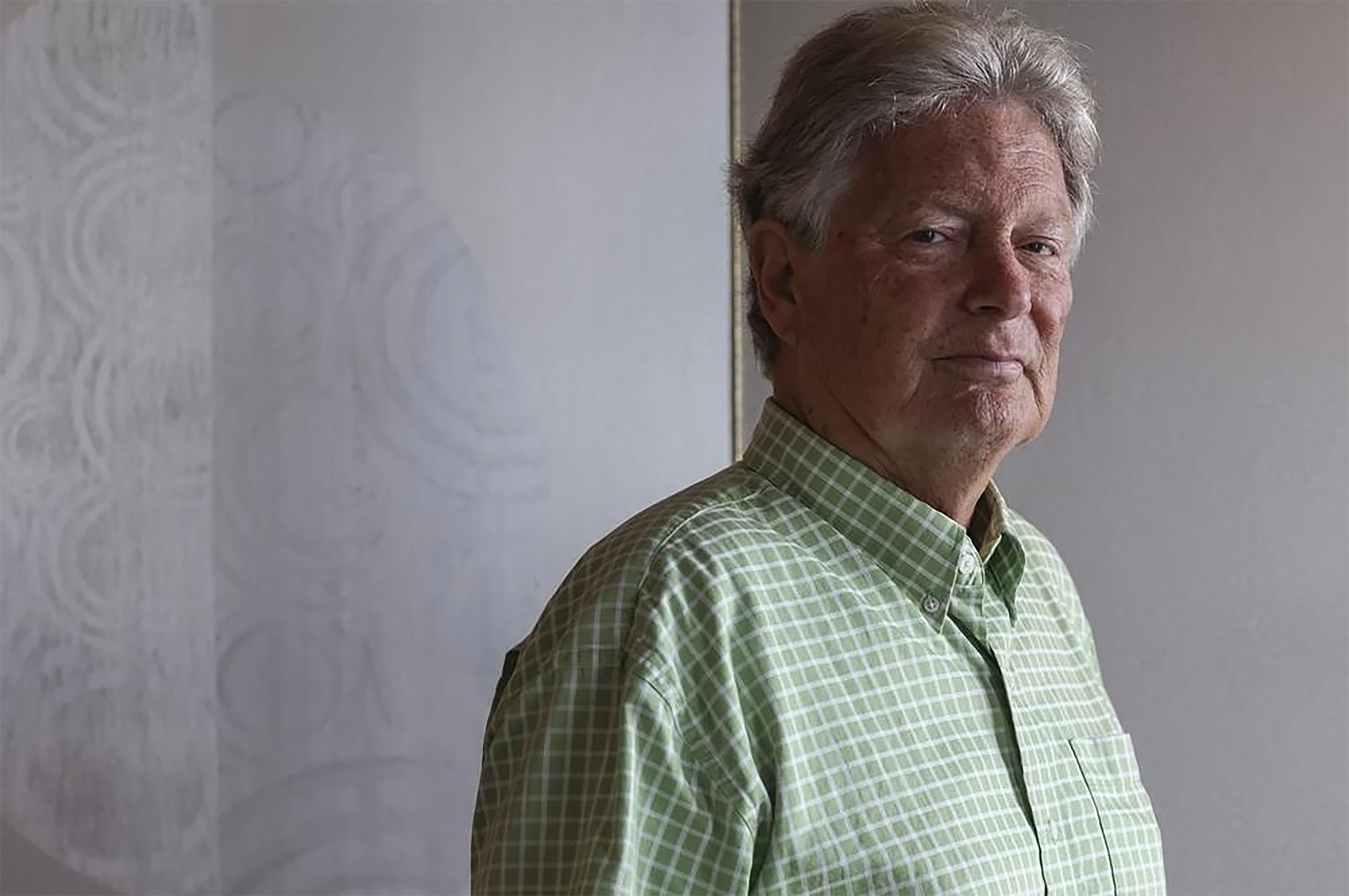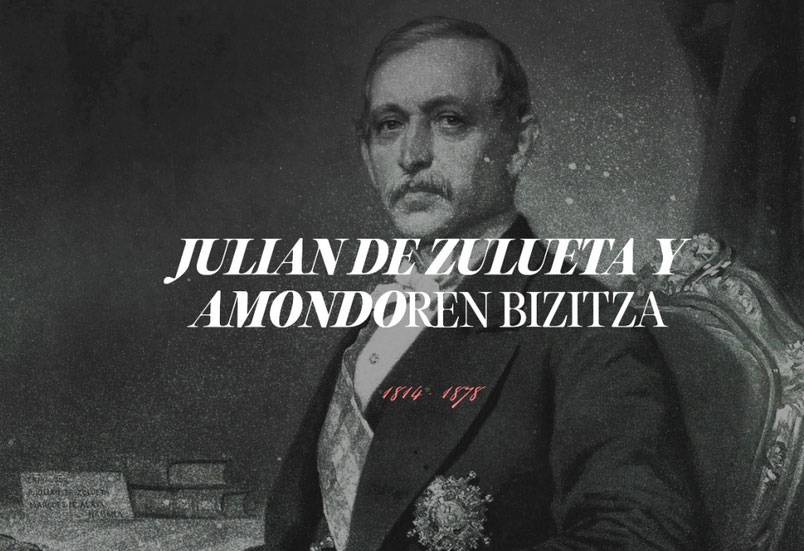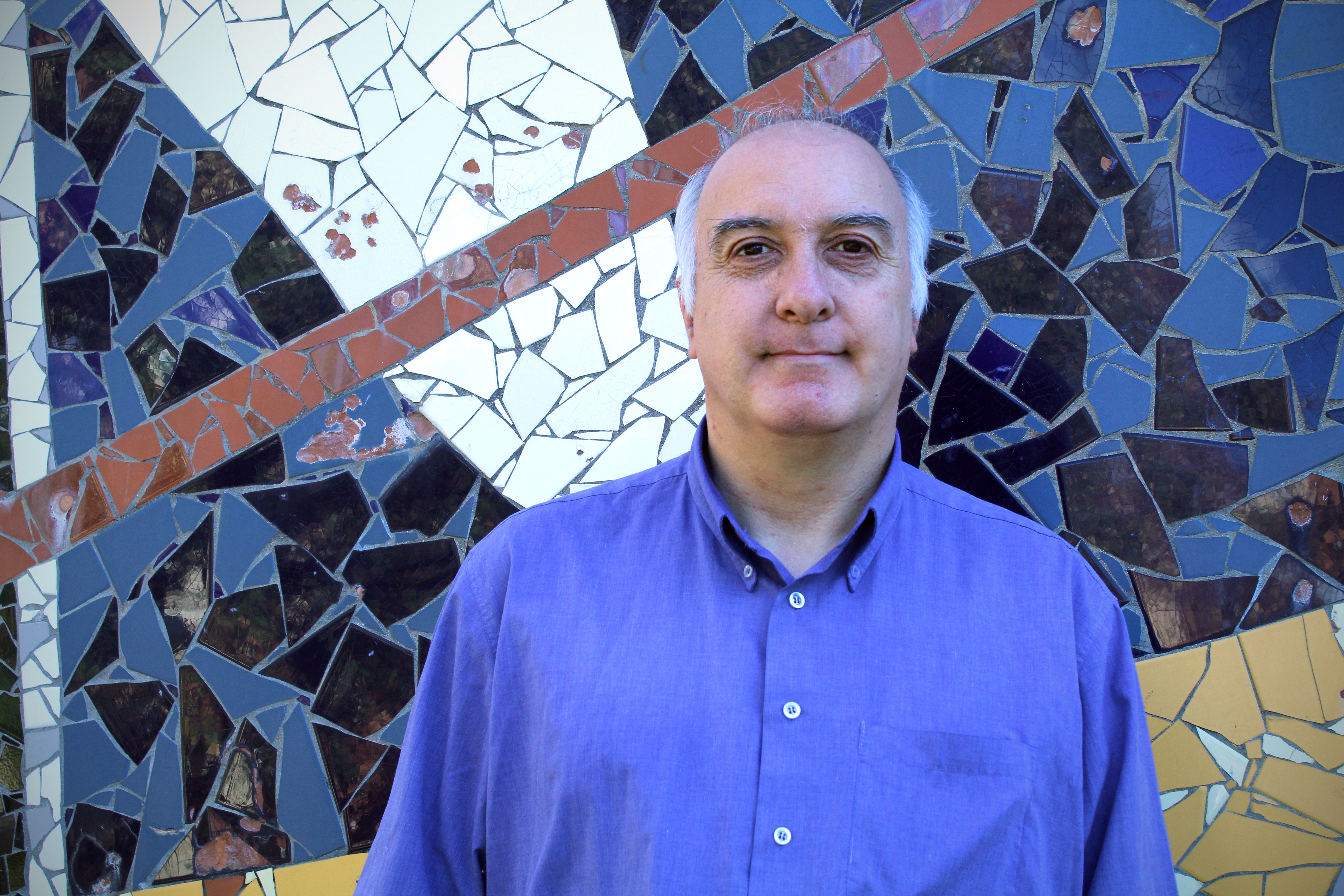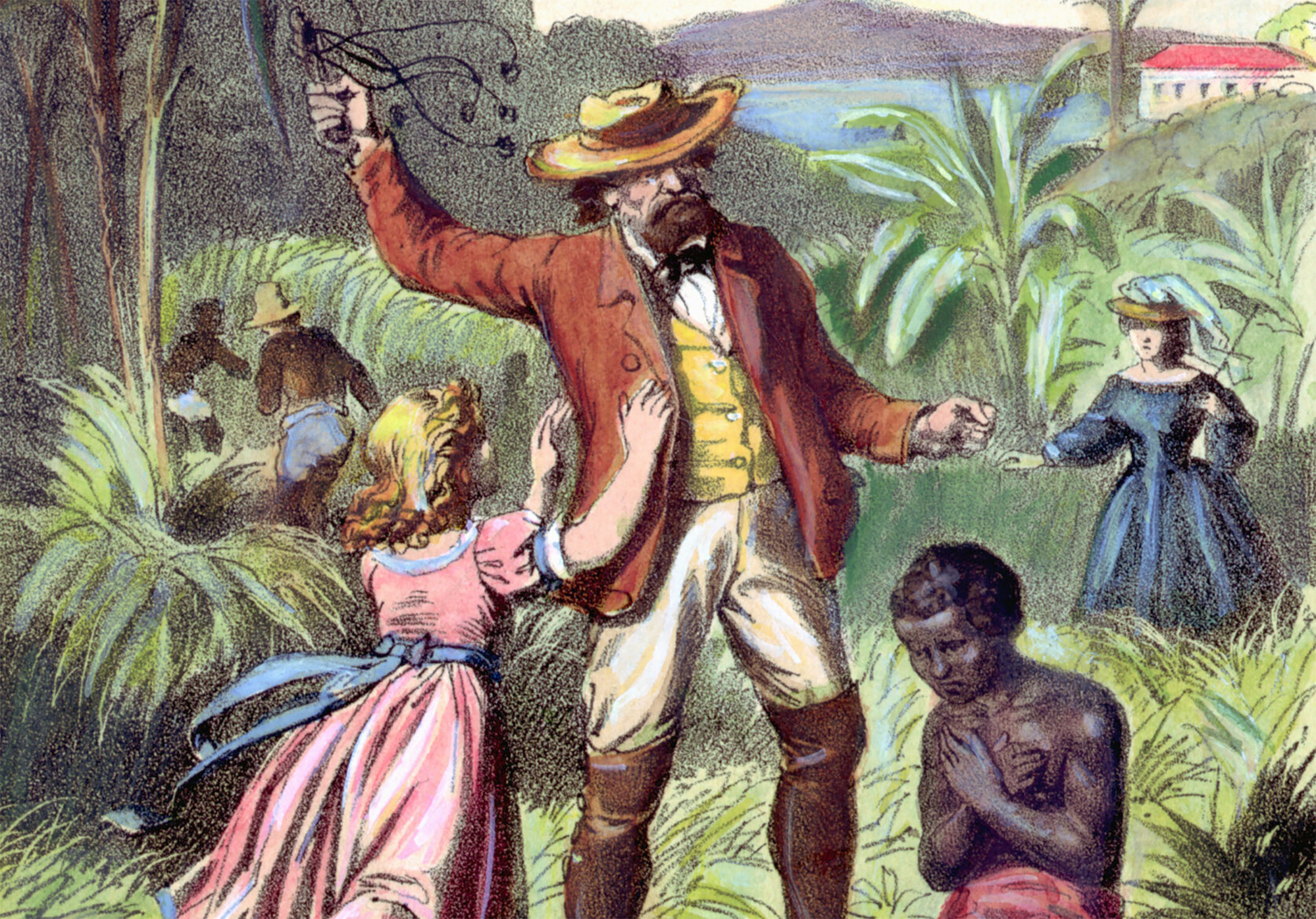Haiti, revolution and revenge
- A revolution struck the world in August 1791. And it didn't happen in Europe. The thousands of black people put their feet on the island of Saint-Domingue on the Atlantic colonial economic system based on slavery: after years of struggle, they created the free country Haiti. It was the first and only time that the slaves successfully broke the chains themselves, the first colony in this hemisphere that liberated the yoke of the metropolis and the first revolutionary movement across America. So why do we know so little about this story? Because the “Black Republic” became the nightmare of the slaves of other territories, including many Basques, and above all because in the last 230 years Haitik has revealed the debt it has to the exploited countries what we call the West.
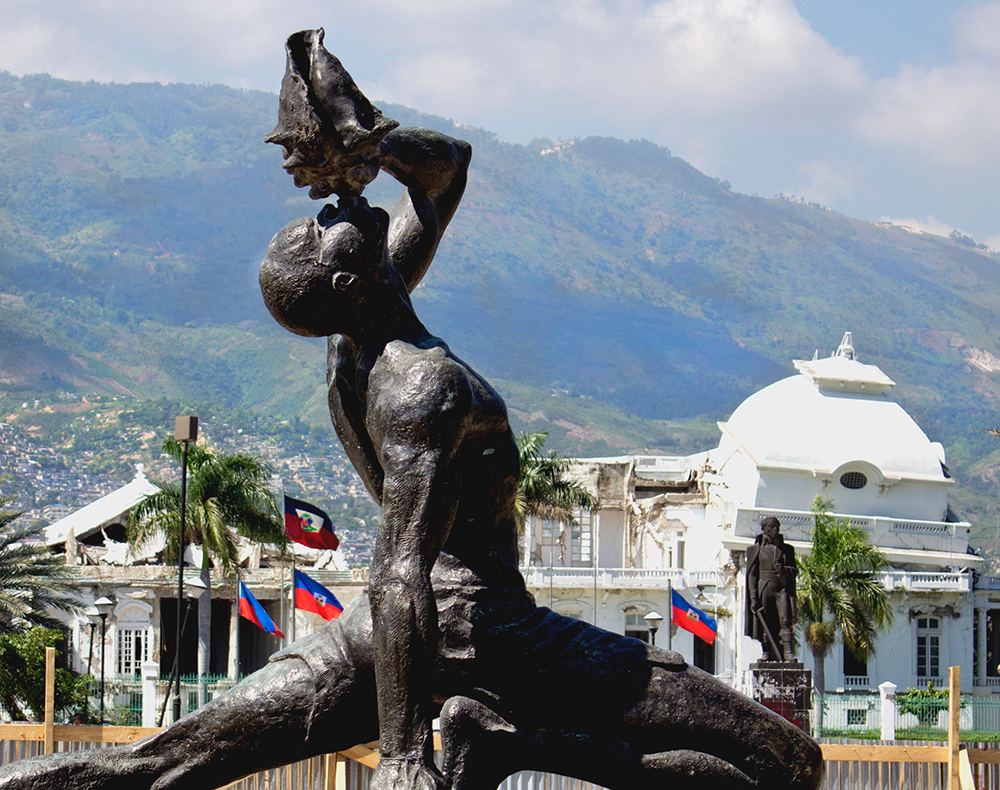
An international day is celebrated around the world on 23 August to remember the slave trade and the abolition of slavery. It was thus declared by the UNESCO General Conference in 2004, when Haitian slaves rose up in 1791. “This revolt represented with it a universal demand for freedom, beyond any time and space,” said this United Nations organization in its statement. According to this, the revolution undertaken on that island of the Antilles has marked the trajectory of civil rights movements and the liberation of peoples over the past 230 years, as a result of the “expansive effect” of that event.
But, although it may seem paradoxical, this very important year has been almost silent. In vain, the reader will try to find in the newspaper library references to this day, just a brief institutional note and some simple act, like the one carried out in Bordeaux, in front of the sculpture in memory of Toussaint Louverture. We were not surprised that among the ephemerides of Wikipedia, on August 23, the Haitian revolution did not appear on the lists in Basque, French, Spanish and English. Why ignore this? What did the slaves initiate on 23 August 1791 to keep the current hegemonic system in the shade?
In the north of the French colony, in a place called Bois Caïman, dozens of slaves practiced a secret voodoo ceremony a few days earlier: they sacrificed an animal, named leaders and vowed that they would kill all the whites, led by Dutty Boukman in the houga or the shaman, whose operation was organized on a gigantic scale, two years before the Revolution began in France. Soon after, on the night of August 22, a tropical storm gave them the opportunity for revenge. Amid strong winds and basques, tens of thousands of people gathered in a clearing house in the Morne Rouge forest, next to the city of Cap-Français, with rockets and machetes in their hand. After drinking pork blood, Boukman made the last words: “The white god drives crime, but the black god favors benevolence. Our good god has promised us to take revenge on the insults they have done to us. He will guide our weapons and help us. Let us knock down the symbol of the white god that has made us cry so many times, let us hear the voice of freedom in our hearts.” This is what historian CRL James told us in the famous book on Haiti Jakobino Beltza (1).
This anti-colonial and egalitarian project in Haiti could only succeed if it were universally disseminated. That is why they have boycotted, intervened, sabotaged,
punished, until today become all
A few hours later, the vast northern plain surrounding the Cap-Français, probably the most precious economic treasure of the French empire, became a gigantic fire. Slaves, as in many other revolutions, began to destroy what was the origin of their suffering, until their bosses died and the coffee and cane plantations became ashes. That day, 180 sugar farms and 900 cafes, cotton and anyl fields were burned. At least 1,000 white people and 10,000 black slaves died in Matxinada, while another 25,000 went to the mountain. From that moment on, with Toussaint Louverture and Jean-Jaques Dessalines at the head, the former slaves faced French troops, until they were completely expelled from the island and achieved independence from Haiti on January 1, 1804.
Haiti was the first free country in America. As Eduardo Galeano said, even though previously EE.UU. They had declared independence, because they still had 650,000 slaves, “and they remained slaves for a century.” From there he abolished slavery before England. And he beat Hai the army of Napoleon Bonaparte before anyone else. For many it was the most violent, radical and complete revolution in history.
European and American supremacist elites never forgiven him to do so, because it sparked a spark in the popular classes of other colonies. Because, as the Haitian intellectual Jean Louis Vastey remembers, this anti-colonial and egalitarian project could only succeed if it were universally disseminated. That is why it is boycotted, intervened, sabotaged, punished, to become everything today. [Independence's debt to this post-revolution evolution: We've published the article The Origin of Haiti's Misery in this issue of Larrun.
The poorest of the poor
Haiti is at the bottom of the UN Human Development Index, is the poorest country in America and 4 million people are hungry every day (2). They lack resources in schools and hospitals and the situation has worsened since the 2010 earthquake and the 2020 pandemic.
There is now an episode of insecurity and political instability: in July, armed men entered the house of President Jovenel Moïse and shot to death seriously wounded by his wife. Moïse was heading since 2016 thanks to a political operation supported by EE.UU. and a group of countries called the Core Group, including the French and Spanish states, but with little social protection and without holding elections to renew the Haitian Congress. The companies around them were involved in a corruption network and, according to a 2019 audit, Petrocaribe benefited from the advantages offered by the Venezuelan company for the supply of oil. The protests in the country as a result of this situation were enthusiastically suppressed by the president, using criminal police gangs.
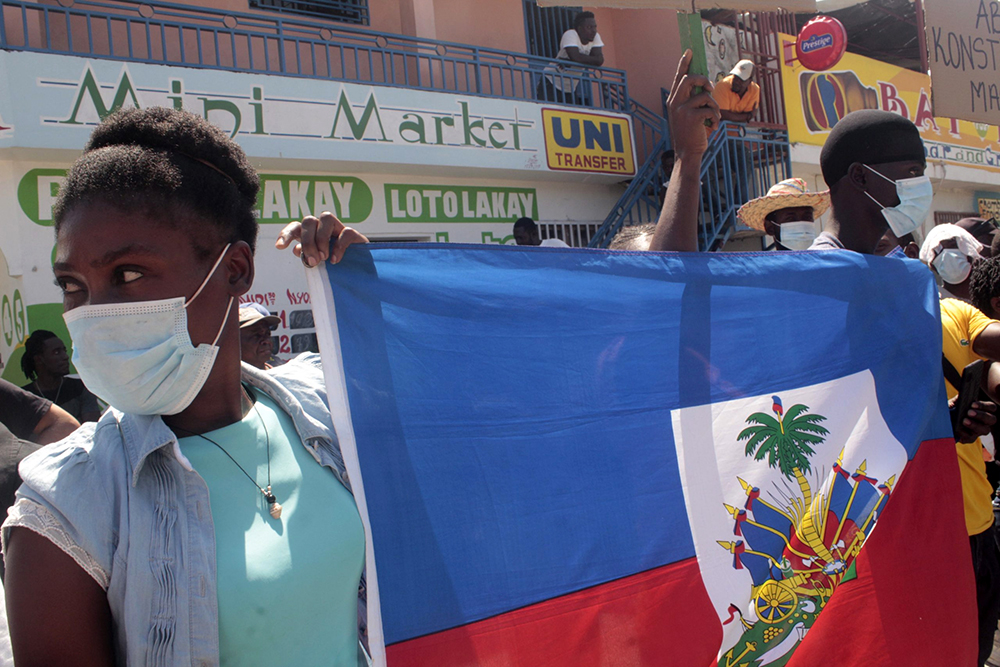
They tell us that the Magnicide has been organized by a dark international plot in the media, one of those summer news that every day takes the shape of a novel: the murder was carried out by a command of 26 former Colombian army soldiers, was hired by a private “security” company from Miami, including the Haitian mercenaries living in the US, the officials of the department of Haiti’s Ministry of Justice.
The media with a neo-colonal approach have linked this crime to a matter related to corruption and smuggling. From a decolonial point of view, however, the Haitians know that this is yet another intervention by the international powers. It is not yet known who financed the operation. And, as Colombian pacifier and anthropologist Alberto Pinzón says, the question is who benefits this murder?
Earthquakes and silence
In addition to the political earthquake, the turbulent situation in Haiti has been accompanied by a real one reminiscent of what happened eleven years earlier: on 14 August a 7.2 degree vibration was measured on the Richter scale in the communal Petit-Trou-de-Nippes, on the Shark Peninsula, west. According to the United Nations, it has officially caused more than 2,200 deaths and has left thousands of other citizens without resources. In addition, tropical storms hit the island again, as in previous years hurricanes Matthew, Sandy or Irma. Haitians are experiencing the climate emergency in the crudest way, but as BBC journalist Greg Palast explained when the 2010 earthquake occurred, natural disasters do not exist. “200,000 Haitians have been sacrificed as a result of poor housing conditions in the neighborhoods and the ‘austerity’ plans of the International Monetary Fund” (3).
Haiti is not a “failed” country, but a place exterminated by imperialist interference. This second part of its history is not narrated by the UNESCO Declaration of 2004, and without it, of course, international silence cannot be understood. “Haiti’s international policy has to change!” has claimed more than 150 global organizations within the Stop Silence Haiti campaign launched last year, including Attac, the Confederation of International Trade Unions, Via Campesina, the CADTM association against unjust debt…, which have demanded respect for the sovereignty of Haitians and have denounced any intervention. The institutions have asked the international community to support a citizen-led transition, based on the 1987 Constitution, approved after the fall of dictator Jean-Claude Duvalier Baby Doc.
Because there's a lot at stake in Haiti. Because it is an emancipating symbol turned into a waste of colonialism and interventionism, which recalls that the world powers enriched by slavery and force owe a great deal to poor countries, not the other way around.
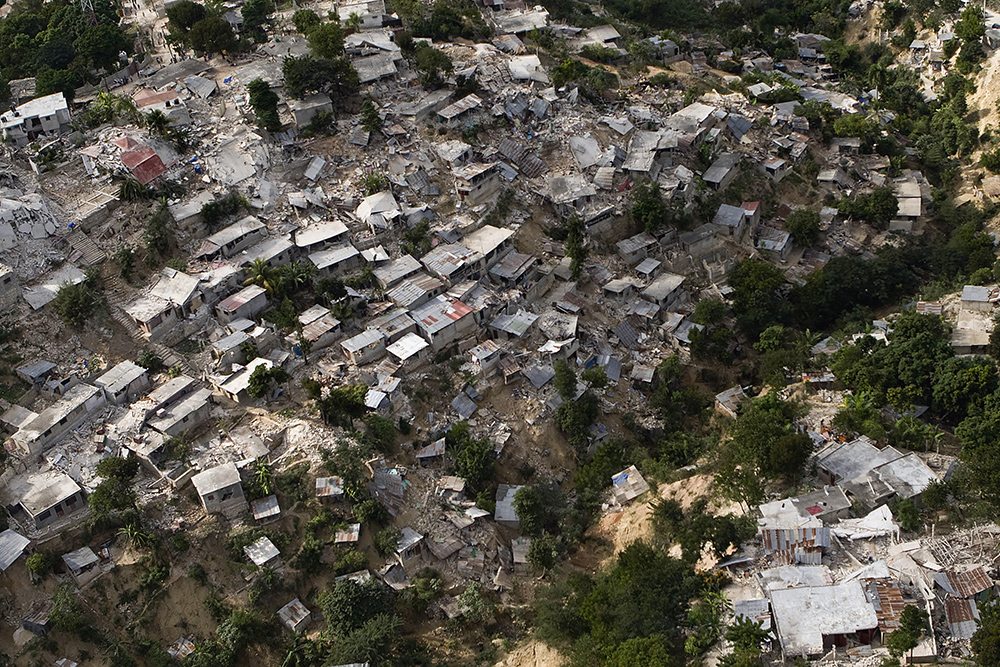
Genocide in slavery
Just putting a leg on the island that Christopher Columbus called La Isla Española in 1492, the inhabitants of the village of Taino who lived there welcomed them. The Arawas spoke of a variant of language – hence the word Ayiti in the Creole, recovered a few centuries by the revolutionaries – (4). But, more than that kind behaviour, the golden adornments that Europeans observed hanging in their ears marked the fate of this people of origin.
Soon, the island became the first conquered region of America for the Spanish empire. After 20 years, the population was cut from half a million to 10,000 people, many of whom were converted into slaves for gold mines by the system of commissioning, and most of them were killed by invading diseases, since the smallpox plague was first spread in 1507.
After this genocide, chroniclers and courtiers of the time have wanted us to show the “new” continent as a virgin space to repopulate, but lately there are more and more communities that claim the existence and influence of primitive peoples, such as in the small Antilles, where the language of the most Calines has survived to this day and have reused their architectural tradition to combat hurricanes with wooden casets. Fewer and fewer are devouring the conquering fallacy that the history of America reseted in 1492.
Haiti was the territory of torture in the 18th century. If living in the world was suffering, that was happening in Haiti, for those who had black skin.
In 1517, the Spanish emperor Carlos I authorized the transportation of African black slaves to the new colonies. These first trips were organized by some Basques: The uncles and grandchildren of the Commissions, Urrutia, explained in the Larrun of June 2020 on slavery (No. 253). ). Thus began the tragedy of Haiti, which would define its economic, social and cultural structure.
Smuggling was the easiest way to obtain an economic benefit in Hispania, as it was in a strategic location. It gradually became the meeting point of the French and English Bucans, pirates and corsaries, who, one step from the small island of La Tortuga, had an extensive plain north of the island. In 1697, which became a currency of exchange for European wars and the peace treaties, the East, the current Haiti, was left in the hands of France under the name of Saint-Domingue, and from there it began to call the entire island (5).
In the first half of the 18th century, the French colonies were ahead of the English Sugard Islands, and above all Saint-Domingue was the export sugar par excellence, which could only satisfy half of the world's demand for the free market. In the coffee market it was also about to dominate; cocoa, cotton … everything consumed by the French was produced there and accounted for one third of the city’s wealth according to various sources (6). Saint-Domingue was the richest colony in America, ahead of Jamaica or Cuba.
Territory of torture
In order to do so, forced labour had to be developed intensively, with penalisation. “Violence is the mother of the capital,” wrote Cuban historian Manuel Moreno Fraginals. It is estimated that, before the Haitian revolution, 29,000 slaves were taken each year to the island's poles, in thousands of scientific times. Black slaves could be replaced by “new blood”, as they were seen as a mere resource of an entire production chain. In this housing vacuum, many barely lasted between two and three years. In 1804, about to proclaim the independence of Haiti after the ten-year revolution, the mentality of the French bourgeois colonizers did not change: all the blacks on the island had to die and nothing knew more blacks of freedom and equality.
In Europe, the cities of the French Atlantic coast specialized in the trafficking of slavery, especially Nantes and Bordeaux, but also smaller cities such as Bayona. [In this issue of Larrun you can read the article on the participation of Basques in this business in the slave trade networks of Baiona].
Sugar became the most lucrative commercial product in the world, which would not be possible without creating a kind of Mordor of terror and terror. Haiti was the territory of torture in the 18th century. If living in the world was suffering, that was happening in Haiti, for those who had black skin.
Malnutrition was the main enemy of the slaves, who received punishment more often than food. “When the scourges stopped, an incandescent wood passed through the buttocks of the victims (…) the mutilations were common and their owners threw boiling wax on their hands and shoulders, burned them alive little by little on low fire, rubbed them with dynamite and turned them on with wax, buried them to the neck and rubbed their heads with molasses so that the flies could swallow us. Is that true? There's a lot of evidence to say yes.
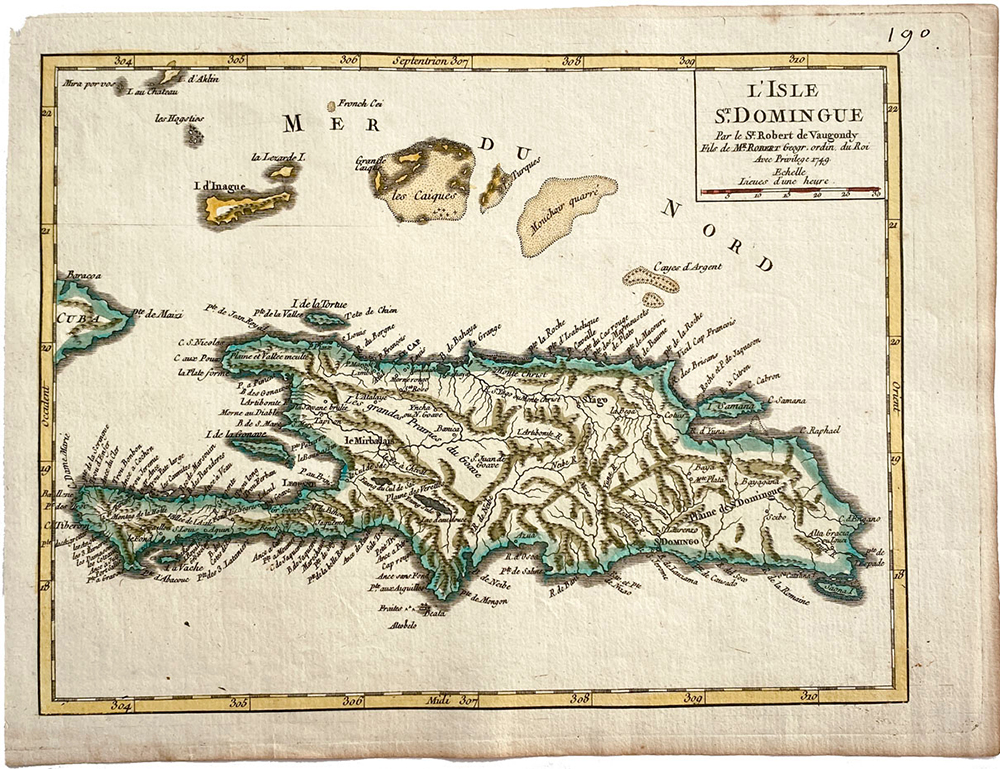
For example, scourged torture contained thousands of refinements: that of the staircase, that of the hammock, that of the four legs, that of the collar… the latter designed for women not to abort. Why did the cruelty of the white settlers reach that level? Was it necessary? The answer was given by James himself: “There was a difficulty: they could be captured like beasts, transport them like animals, make them work like donkeys, use the same stick to hit them, lock themselves in the fences and end hunger. But despite the black skin and curly hair, they remained invincible humans, with the intelligence and resentment of humans. The creation of submission and acceptance in them required a calculated barbarism regime, which explains the infrequent conduct of the owners, who apparently had no responsibility to maintain their property, but had to start by guaranteeing their safety”.
Island of the difference
It is not surprising, therefore, the obstinacy of the slaves for freedom, which was the central motto of Haiti’s first constitution “Freedom or Death”. The uprising of 1791 was not a spontaneous awareness, but there were many previous attempts. For example, poison was one of the most important weapons for destruction. In 1751 some 3,000 slaves fled to the Monte, known as Cibrown or Marronnagge, and his boss, the Voodoo priest François Mackandal, devised for six years a plan to poison the cattle and the wells of white settlers, but was finally captured and burned in the plaza. However, in the imagination of many, he survived this trance as he launched flames in the air.
Voodoo and Criolla were one of the main pillars for the self-defense of the exploited social strata. The Budu syncretic religion practiced in Haiti has some of the beliefs of the West African tribes, and the Criolla language has also drunk from the original slaves' languages, but they are not a simple return to the origin of the ancestors, they cannot be understood without the oppression of centuries of slaves in America and, especially in Haiti, without looking at the complex society in which they lived from inequality.
The huge base of Haiti's social pyramid was slaves. Above were the couleur or mulatus gens, some converted into landowners, the free blacks who had been slaves, the small white settlers, many poorer than the mulats, and, finally, the large whites they sent on the island. But there were also differences between the latter, especially among the bourgeoisies who lived in commerce, the official kings and the owners of large sugar and coffee series. Eric Willians, speaking of capitalism and slavery, says that white settlers made up a population of 40,000 people, the Mulattos and free blacks 28,000, and the slaves 458,000, without whom “it would be at the bottom of the Saint-Domingue Sea”. In that status quo, among the small white settlers, the rich and the landowners, there were many grudges, they hated.
When the country proclaimed its independence in 1804, the debate ended with Article 14 of the Constitution: from then on, all citizens of Haiti would be called “black”, regardless of their colour.
With the arrival of the news of the French revolution of 1789, on the other side of the Atlantic, everyone wanted to take advantage of the confused conjuncture to make bigger businesses and other rights for them. In the early 1791, the rich mulattos were raised, guided by the enlightened merchant Vicent Ogé. Free black mother and treating white father, he studied in Bordeaux and from a young age he drank from the revolutionary winds of Europe. Thus, when he returned to Haiti, with the help of the abolitionist association Le Amis de Noirs, the revolt began: “But what was being debated was equality for the mulats,” says Williams. No one mentioned the slaves.” However, the white settlers stepped on the mestizos and killed Ogé, breaking all the bones on a wheel. The cries of terror and denunciation of Maximiliem Robespierre and other radical Jacobin friends of Paris were heard from Cap-François. But Haiti was not France, and its targets were not willing to lose their privileges.
When the country proclaimed its independence in 1804, it turned upside down these stratifications and prejudices based on skin color. The debate ended with Article 14 of the Constitution, from which all Haitian citizens would be called “black”, regardless of the colour they were. The current foreign Haiti is white, while the local is black. Rationalization therefore has nothing to do with color, the word “black” is understood as a political concept. But let us not anticipate the consequences.
Toussaint Louverture: slaves to action
In those early days, the pretty principles of Liberté, Egalite, Frategnite were apparently not made for slave blacks. In the 18th century, the main contradiction that enslaved the discourse of freedom was caused by lambs placed on the empty legs of African empires in Europe. Thus, as the events in Haiti progress, these inconsistencies of the French revolution became more evident and the debate on abolition intensified. According to thinker Susan Buck-Morss in his essay on the relationship between the dialectic owner of Hegel and the Haitian revolution, the only possible logical consequence of the idea of universal freedom was the abolition of slavery, but “not because of the actions or ideas of the French revolutionaries, but because the slaves themselves took action”.
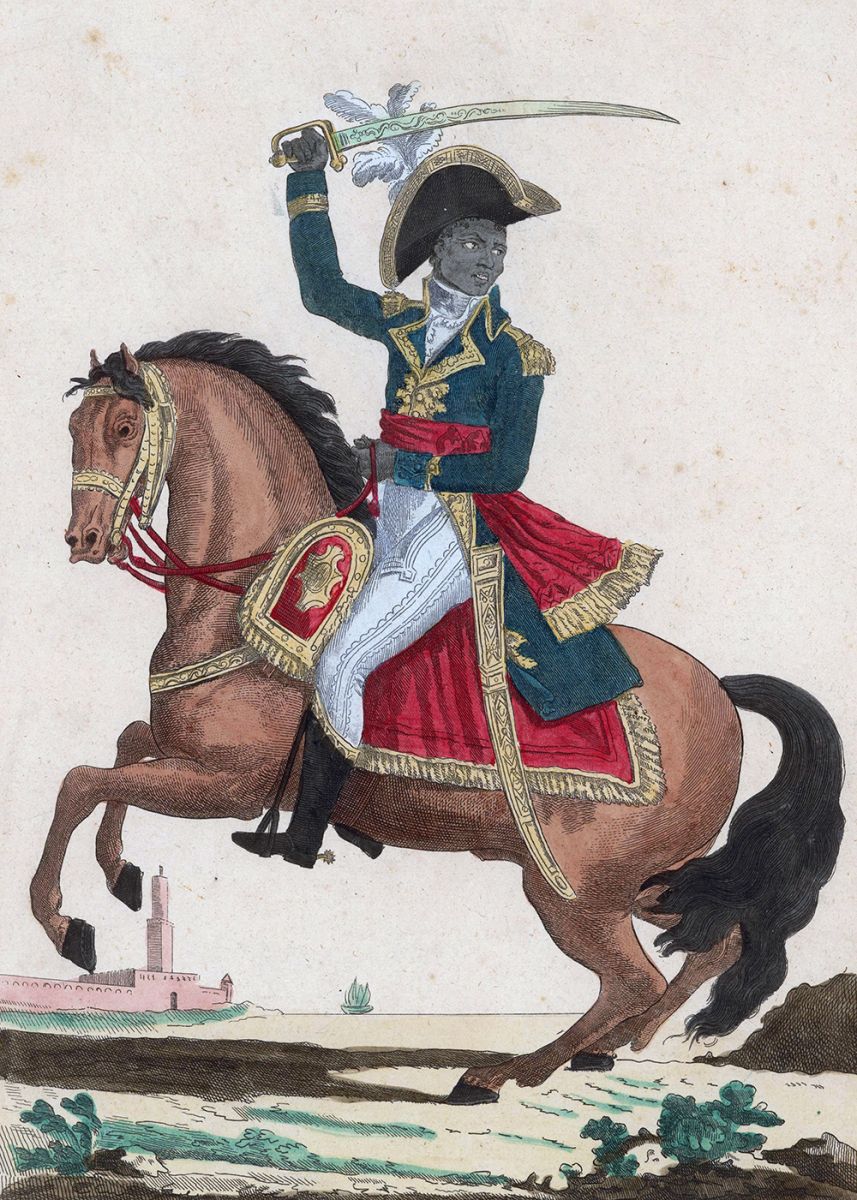
In August 1791 a black smoke turned the day at night in northern Haiti. The slaves seized their destiny guided by Boukman Priest, and the revolution quickly spread to other territories. François Dominique Toussaint de Bred, later known as Toussaint Louverture or “initiator”, soon became the main protagonist of this revolution.
Although he was a former slave, who achieved freedom in 1776, unlike many others, Toussaint’s shoulders never tested clubs and his owner allowed him to have a certain cultural level, learning to read and write with the classical works of the time. But above all, it stood out by its very nature. There are countless virtues confessed to him by peers and enemies: self-control, diplomatic and speech skills, compassion for enemies, closeness, energy… Thus he managed to bring together people from the different sectors that made up the complex Haitian society, including many white people.
“From the most austere black worker to the French generals, or the most humid, cosmopolitan and experienced whites, all accepted their work and their personal idiosyncrasy, with Toussaint being the first personality of Saint-Domínguez,” writes James. The historian twice compares the Haitian leader with characters like Napoleon Bonaparte and Abraham Linconl, and is convinced that without Toussaint this story would be completely different: “It’s impossible to decide where social forces end and when the mark of their identity begins.”
The tomb of the British first…
At the beginning of Toussaint did not join the revolution, he preferred to be protected by the cattle of his former owner. But as the fireballs approach, he realized it was time to make a life change possible. Thus, the old 45-year-old man, the old Toussaint, takes refuge in his family and enters the camp of revelations. That's where it all started.
The process from 1791 to 1804 was really complicated, and the revolutionaries had to make continuous changes to the ploy and direction to survive. First they fought for the Spaniards, supposedly committed to freedom in the east of the island, but then the French commissioners Léger-Félicité Sonthonax and Etienne Polverel, the latter biarnotarra and lawyer in Baiona, decreed the emancipation of all the blacks of Saint-Domingue, and the declaration of slavery of 1794 of the National Convention of Cologne. Thus, Toussaint and his troops changed sides, exclaiming the Spaniards to their territory – in this context France exchanged the Spanish colony with the Basque territories in the Basel Treaty of 1795 – and fighting the invasion of its English allies.
The process from 1791 to 1804 was really complex, and revolutionaries had to make continuous changes in strategy and direction to survive.
Toussaine, from the beginning, successfully applied in Haiti military guerrilla techniques he learned as a soldier during the U.S. War of Independence. So he got the British imperial army, made up of thousands of soldiers, face on the north coast, Lt. Gen. Thomas Maitland and the few English soldiers remaining until, in November 1798, he was finally dismissed from the island, after a humiliating negotiation. The Haitian expedition killed 50,000 people, many of them with yellow fever, and wounded the British, which meant the independence of the colony, recognised by London Gazette without unanimity.
But Haiti was still linked to the French Republic. Toussaint was the first to defend his values and interests, because he believed fully in the Republic, because it was the result of the revolution that led to the abolition of slavery. The black leader tried to restore the economic system of the plantations, through secret trade agreements with England and the United States, to provide training for citizens, to relieve the shredded territory and to build a country based on the republican and modern values of the time.
In the words of Karl Marx, the “locomotive” of history is a revolution, and so it was not quiet either. Internal clashes, revolts, cheats and all sorts of dark behaviors, such as the desire to rule Haiti during those years, Toussaine continued to compete with the Mulatan leader André Rigoud, who dominated the southern part of the island, until he ended up defeating. The English, despite the fact that the island was from the outside, continued to conspire with the intention of maintaining slave labor and trade. In Paris, the Directory was brought by Termidor and Brumario's blows in Napoleon.
… after the tomb of the Napoleonic troops
“I’m not going to leave the shoulder of a uniform on the shoulders of a single black in that colony!” Napoleon Bonaparte told Colonel Vincent when he brought him the proposal for a constitution for Haiti. Bonaparte hated blacks, was able to “throw the black word out of his mouth as saliva, in the style of best trafficker slave,” according to James.
One of the symbols of the Republic was the abolition of slavery in the metropolis, and the coup general intended that Haiti eliminate that status in order to restore forced labour. But he knew it wasn't going to be easy and he organized for it an army of 28,000 soldiers, led by General Charles Leclerc, the largest military expedition in Europe to America ever sent. The strategy of Toussaint and his leaders was to eliminate previously all that the invaders could find at the same time and retreat to the mountains to begin with the guerrillas: “Why were you all? A French officer asked a prisoner. We have the right to burn our fields, because a man (sic) has the right to have his own working instruments, answered this anonymous anarchist,” can be read in the book Jakobino Beltzak.
Napoleon organized an army of 28,000 soldiers to restore slavery, Europe's largest military expedition to America.
After a year and a half, the lack of resources, the rains and the yellow fever caused a great slaughter among the Leclerc troops. But one day Toussaint was arrested with a trick in some negotiations and embarked with his hands tied away from the island. For many, their trust in the enemy and the belief still in the Republic led the Haitian leader to the loss. ==Death==Toussaint Louverture died at the age of 54 in Joux Castle prison, a thousand meters high in the French Alps, on April 7, 1803, with cold, hunger and grief, according to his biographers.
However, before his death, what he announced was fulfilled: “You have only cut off the trunk of the tree from the freedom of blacks. But it sprouts again because its roots are many and deep.” Jean-Jacques Dessalines brought definitive independence to Haiti, unlike Toussaint Louverture, who had no mercy on the whites he captured and responded to the French by doing the same barbarism (7). Leclerc's latest letter to Napoleon is discouraging: “We have to kill all the black people in the mountains and half of those who live in the plain, without that there will never be peace in this colony.”
What is freedom for the slave
When Leclerc himself died of yellow fever, the replacement of him, the Count of Rochambeau, was sent 20,000 more soldiers to continue the war of death. Thus, he also began to massacre mucans to guarantee the supremacy of whites. They buried the blacks back to the neck so that the flies swallowed it, threw it at the dogs, drowned in the sea… But he already became a popular war for the Haitians, and fought it by removing the color of the white French flag: “What happened after Leclerc’s death is one of those pages of the story that every student should know,” says James. (…) The men, women and children who expelled the French from Saint-Dominguez have nothing to envy those who have fought for independence elsewhere or at any other time. And the reason is simple. In the end they understood that without independence they could not keep freedom, and freedom was much more accurate for the ex-slaves than the diffuse figure of French political democracy” (our italics).
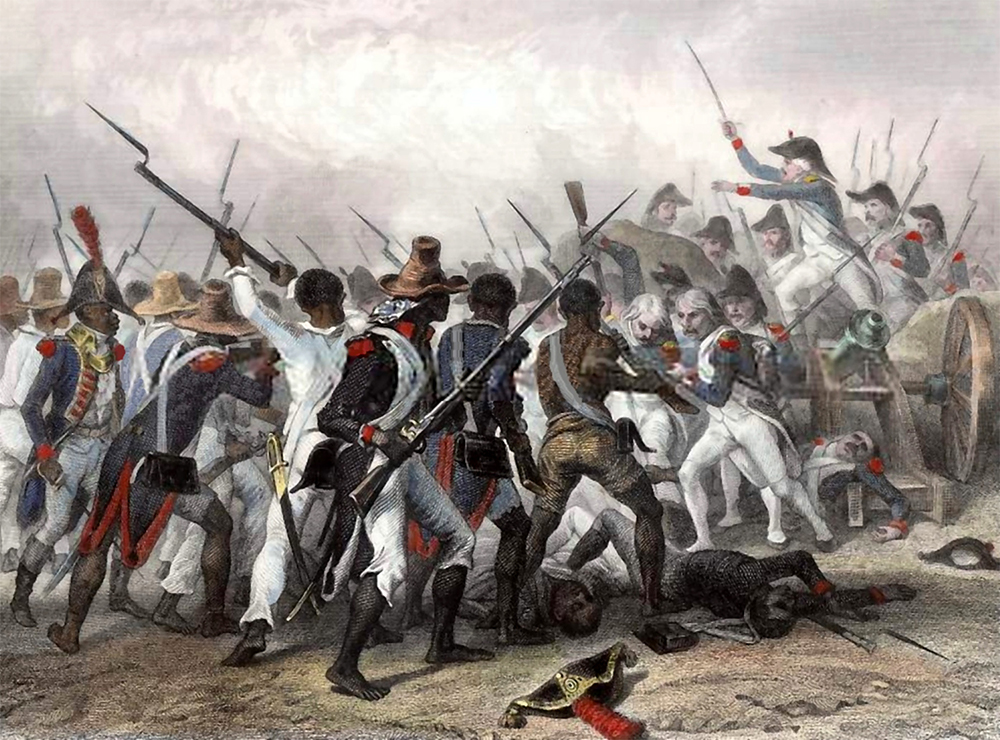
18 November 1803, Vertières, Cap-Français sur. The French are besieged in the last city of their domain: When Dessalines orders the final attack, a rebel officer named François Capois, also known as Capois-La-Muerte or Capois-hil, moves beyond the fire of the muskets and artillery, shouting “Follow me!” This image would later become an icon of Haiti’s independence (8). On the same night Rochambeau decided to evacuate the island and surrender himself to the British who controlled the sea. Of the 60,000 soldiers sent to this campaign, only a few were alive and rotting in English jails. A month later, the declaration of independence was read and the new republic of the Antilles was called “Haiti,” later Salines became emperor.
The Haitian revolution unleashed the force of abolition and freedom from slavery in other colonies. The image of the thousands of white landowners and slaves who had to flee from that island remained in the imagination of many throughout the following century. It was an image that made the exploiters admire the fears and the exploited. But above all, by stealing the words of CLR James, this is a story that would change the fate of millions of people and the economic currents on all three continents. A universal story.
(1) Written in 1938, the book Jacobino Beltzak is conceived as a masterpiece that narrates the history of the Haitian revolution. The anti-apartheid movement in South Africa used the book as a reference for its struggle. Cyril Lionel, born on the island of Robert James Trinidad, took the path of African-American Marxist historians in the early 20th century under the influence of the Russian revolution. From a literary perspective, he created another account of the liberatory movements of the Caribbean countries.
(2) According to Adoniram Sanches of the Food and Agriculture Organization of the United Nations, 48 per cent of the population currently suffers from “gross hunger” in Haiti.
(3) Quoted in For the Sake of Empire (Past and Present, 2011) by Josep Fontana.
(4) Means “mountainous territory” in the language of origin.
(5) In this report we will call Saint-Domingue the colony or island of colonialism and the country of Haiti itself.
(6) According to Noam Chomsky, France earned 20% of its wealth “through the torture of Haitians” and “remains so unfortunately” (Le Monde Diplomatique, April 2015)
(7) Despite the harsh and bloody image of Dessalines, official stories have so far recognized their important role in Haiti, which better represented the revolution.
(8) The participation of women in this and other battles was important. Cécile Fatiman, one of the most well-known leaders, African mother and Corso father, is one of the references of the powerful Haitian feminist movement.
Washington (EE.UU. ), 1807. The US Constitution banned transatlantic slave trade. This does not mean that slavery has been abolished, but that the main source of the slaves has been interrupted. Thus, slave women became the only way to “produce” new slaves.
So in 1845, in... [+]
Europar Batasunean berriki onartu den Migrazio Itunak, asko zaildu dizkie gauzak euren herrialdetik ihesi doazen eta asiloa eskatzen duten pertsonei. Eskuin muturraren tesiak ogi tartean irentsita, migratzaileentzako kontrol neurri zorrotzagoak onartu dituzte Estrasburgon,... [+]
Frankismoa ez zela 1975ean amaitu diktadoreak ohean azken hatsa eman zuenean, hori badakigu. Erregimenaren haziek bizirik iraun zuten poliziaren tortura ziegetan, justizia auzitegien sumarioetan eta militarren zein politikarien deklarazio kolpistetan –Aznarrek azkenaldian... [+]
Julian de Zulueta esklabista arabarraren inguruko erakusketa ikusgai dago LABE espazioan.









